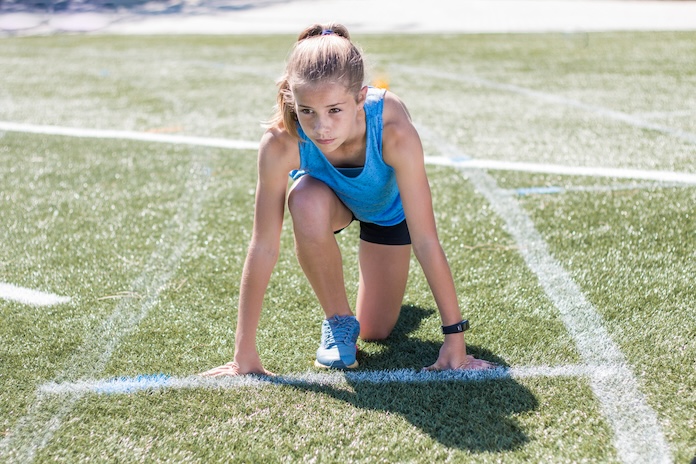Do coaches really have that much influence on the admissions process? How early does a student-athlete need to fill out recruiting questionnaires? Do athletes from smaller or lesser-known high schools have a chance of getting noticed by D1 teams? Here we’ll bust some of the most common myths surrounding the fundamentals of college athletic recruiting, arming student-athletes with knowledge that will empower them to open doors to college athletic careers.
5 MYTHS SURROUNDING COLLEGE ATHLETIC RECRUITING
Myth #1: I’m the best player on my team, so I should be able to play for a Division I college team.
If only it were that easy! The estimated probability of high school athletes going on to compete at either the Division I or Division III level is incredibly low, with only 1% of all high school boys basketball players becoming DI college players, and less than 3% of girls soccer players going on to play Division III, to name a few examples. Not only will you need to be the MVP of your team, but you’ll need to be top-ranked in your state, region, and sometimes even the nation. It’s a wide world of sports out there, with stiff competition internationally: for instance, international student-athletes account for 15 out of 30 players on the Harvard’s men soccer team, 14 out of 45 rowers on the Stanford women’s crew team, 6 out of 12 players on the Princeton men’s tennis roster, and 14 out of 28 of Yale women’s ice hockey players. If you’re still motivated to read on, good for you! But it’s important to understand the competitive landscape so that you don’t neglect your academics while banking your dreams on being recruited.

College Private Counseling
Develop an organized and effective application strategy that leverages your academic and extracurricular experience to stand out.
Myth #2: If I’m good enough, coaches will find me.
For an elite few, this is actually true: there’s no hiding the McDonald’s All American basketball rosters or the world junior hockey gold winners. Colleges don’t have to go hunting for the Texas high school state championship football team or the winners of the Head of the Charles. But the remaining 98% of high school hopefuls need proactive and sustained communication with coaches via customized emails, recruiting questionnaires, social media engagement, and highlight reels to establish genuine interest and break through the noise of thousands of motivated student-athletes. Athletes who play “ball and puck” sports (compared to those measured by time or distance, like crew, running, discus, golf, etc.) need to aggressively seek exposure to college coaches through ID camps/clinics, combines, and showcase tournaments starting as early as eighth or ninth grade, playing for competitive club teams in addition to their high school teams. NCAA recruitment regulations prevent Division I and II coaches from calling you or responding to your emails prior to the summer before or fall of junior year (depending on the sport), but they’ll still be scouting underclassmen and communicating through club coaches, in most cases already establishing a short list of prospects by the time the contact period opens. Division III coaches can contact you at any time.
Myth #3: All sports are created equal in the eyes of college admissions.
Unfortunately, all is not fair in love and college sports. With football, and men’s and women’s basketball generating the lion’s share of revenue for colleges—north of $100 million at many Big 10, ACC, and SEC schools in 2023—it should come as no surprise that these sports carry more weight in the admissions process than sports like cross country, fencing, or golf. Athletic departments must balance the needs and roster sizes of all men’s and women’s varsity teams year to year, and they have tiered priorities based on popularity, revenue streams, and success of a program. A Division I football team might get 30 admissions slots, while the men’s and women’s tennis team might get 4 slots combined one year, and 6 the next (and roughly half as many admissions slots are allotted to Division III coaches). The women’s lacrosse team might be in desperate need of a good goalie while the men’s team has a bloated roster with 4 keepers. Since every slot given to a recruited athlete for one team takes away a slot from another team—and from the incoming class as a whole, including legacy, development, and underrepresented applicants—this zero-sum game becomes a chess match of institutional priorities in any given year.

SAT Tutoring
Expert one-on-one guidance to boost your score.
Myth #4: My grades and test scores don’t matter if I’m good enough at my sport.
Not so fast. Even if you are one of the top performers of your sport nationally or even internationally, you’ll be able to take your pick of collegiate programs only if the admissions office can be confident that you will be academically successful and contribute positively to the culture of the school. The Ivy League calculates an Academic Index based on GPA and SAT/ACT scores, where admitted athletes must fall within one standard deviation of the rest of the student body. In the NESCAC or “Little Ivies,” prospective student-athletes are classified in one of three bands: A) students who are on par academically with the average non-recruited admitted student B) students who fall just below that standard and C) students whose grades and test scores are significantly lower. Colleges have fewer slots for B-band prospects than A-bands, and even fewer for C- bands. The lower your academic band or index, the higher expectation for your athletic contributions: coaches will only support you if they think you have potential to make an immediate impact as a freshman. Despite widespread test-optional policies, many top academic schools still require most athletes to submit test scores, reserving only a select few score-optional slots for under-represented minority students, socioeconomically disadvantaged students, or high-priority athletes.
Myth #5: The coach can get me in if they say they want me.
This is perhaps the most damaging myth out there. Just like The Bachelor, athletic recruitment is a courtship, with coaches initially wooing far more athletes than they’ll ultimately propose to. After an ongoing exchange of calls, texts, and emails (within NCAA contact periods), a coach might seem very interested in you. Coaches might even “commit” to you verbally, but these commitments carry no official weight and can be broken by either party at any time. The summer after your junior year, coaches will submit your transcript (and in most cases, test scores) to the admissions office for an academic pre-read to determine whether you would be admissible with the coach’s support. A positive pre-read is a step in the right direction, but coaches ask for more pre-reads than they have roster spots as they must account for athletes who are also shopping around. An invitation to come on a paid overnight “official visit” to campus indicates you’ve made a coach’s short list (or the final rose ceremony), but again, it’s not a guarantee that you’ll be offered a place on the roster; coaches want to get a sense in person for whether you’ll fit in with the program, and they’ll extend offers to their highest priority recruits first. Bear in mind, too, that college coaching is a volatile career; a coach could leave to take another job before their recruits have been officially admitted, leaving these student-athletes in limbo. At the end of the day, athletes go through the same admissions process that everyone else does, completing an application for their essays, grades, test scores, course rigor, and recommendation letters to be carefully scrutinized by admissions officers. Coaches can’t get you into college—only you can—and the admissions team has the final say.
COLLEGE ATHLETIC RECRUITING: STRATEGY IS KEY
Understanding the nuanced priorities of colleges regarding sports, academics, and institutional needs can help you strategize your approach to college athletic recruiting. Most importantly, take care of your grades and test scores first. Mind your physical (and mental) health, which could be your ticket to one of the most powerful hooks in college admissions. Communicate early, often, and honestly with your target coaches, and seize opportunities to play in front of them. Buckle in for the ride with patience and an open mind.
If you enjoyed this post, follow us on Instagram @toptieradmissions for more tips and subscribe to our blog for expert insights & college admissions news!
- Calculus: Gatekeeper of Selective College Admissions - April 30, 2024
- Strong Undergraduate Psychology Programs - March 27, 2024
- Demystifying College Athletic Recruiting - March 20, 2024

